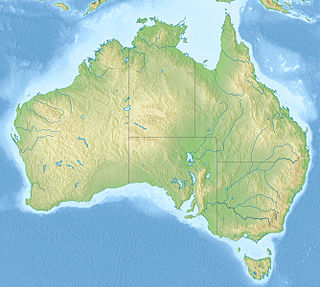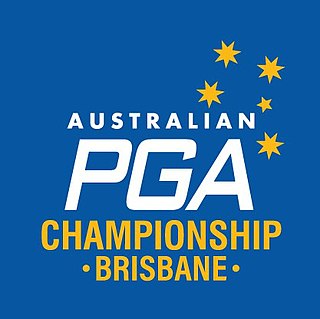
The Australian Open, owned and run by Golf Australia, is the oldest and most prestigious golf tournament on the PGA Tour of Australasia. The Open was first played in 1904 and takes place toward the end of each year.

Royal Melbourne Golf Club is a 36-hole golf club in Australia, located in Black Rock, Victoria, a suburb southeast of Melbourne. Its West and East courses are respectively ranked number 1 and 6 in Australia. The West course is ranked in the top-five courses in the world. Founded 130 years ago in 1891, it is Australia's oldest extant and continually existing golf club. Unlike many metropolitan golf venues, The Royal Melbourne Golf Club has a capacity for 15,000 spectators.

The Australian PGA Championship is a golf tournament on the PGA Tour of Australasia. It is the home tournament of the Australian PGA. Since 2000 it has been held in the South East Queensland region. The tournament was part of the OneAsia Tour from 2009 to 2014. Since 2015 it has been co-sanctioned with the European Tour.
The Australian Amateur is the national amateur golf championship of Australia. It has been played annually since 1894, except for the war years, and is organised by Golf Australia. Having traditionally been a match play event, it will be a 72-hole stroke play event from 2021, having last been played as a stroke play event in 1907.

The Indian Open, titled for sponsorship reasons as the Hero Indian Open since 2011, is the national open golf championship of India, organised by the Indian Golf Union. Founded in 1964, it was added to the Asia Golf Circuit schedule in 1970. In 1998 it became an event on the rival Omega Tour. Since 2015, it has also been co-sanctioned by the European Tour.

The Victorian PGA Championship is a golf tournament played in Victoria, Australia. It has been part of the PGA Tour of Australasia each season since 2009. It is the oldest of the state professional championships, having been first held in 1922.
The Ampol Tournament was the richest golf event of its time in Australia. From 1952 the sponsor, Ampol, offered great prize money to attract the leading American and European players to compete.
Arthur Le Fevre was an Australian professional golfer and golf club maker. He won the 1921 Australian Open.
Francis Patrick Eyre was an Australian professional golfer. He won the 1926 Sun-Herald Tournament and the 1930 Australian Open.
William Rufus Clyde Stewart was an Australian professional golfer. He won the 1927 Australian Open and the 1929 Australian Professional Championship. In 1928 he travelled to Britain and America, playing in the Open Championship and the U.S. Open. He also travelled to Europe in 1931, again playing in the Open Championship.
Frederick Popplewell was an Australian professional golfer. He won the Australian Open twice, in 1925 and 1928.
George William Naismith was an Australian professional golfer. He won the 1937 Australian Open.
Henry Anderson Howden was a Scottish-born Australian amateur golfer. He won the Victorian Golf Cup in 1896, 1897 and 1898 and the Australian Amateur in 1901.
The New South Wales Amateur Championship is the state amateur golf championship of New South Wales, Australia. It was first played in 1898.
James Dalrymple Howden was a Scottish-born Australian amateur golfer. He won the Australian Amateur in 1904 and 1911 and was runner-up four times. He also won the Victorian Amateur Championship twice and the New South Wales Amateur Championship.
Thomas Ewington Howard was an Australian professional golfer. He won the Australian Open in 1923.
Leonard Nettlefold was an Australian businessman and amateur golfer. He won the Australian Amateur twice, in 1926 and 1928, and won the Tasmanian Open and the Tasmanian Amateur, eight times each.
Clyde Bowman Pearce was an Australian amateur golfer. He won both the Australian Open and the Australian Amateur in 1908 and was runner-up in the Australian Amateur three times. He was killed in Belgium during World War I.
Charlie Campbell was an Australian professional golfer. He won the Australian Open in 1922.
The Australian Men's Interstate Teams Matches were an amateur team golf competition for men between the states and territories of Australia.



